Dorothy Day

CHRISTIAN MYSTICS HAVE a definite dramatic streak. Their transformative encounters with God are full of divine revelations (Julian of Norwich), ecstatic visions (Teresa of Ávila), stigmata (Francis of Assisi), erotic imagery (John of the Cross), and all manner of artistic compositions (here’s to you, Hildegard of Bingen).
But then there’s Brother Lawrence who — if he is known at all — is known for experiencing God’s presence as he washed dishes, cooked eggs, or did other monotonous chores that came with life in a 17th-century French monastery.
Born Nicolas Herman, he emerged from one of Europe’s deadliest religious wars a disabled veteran. Haunted by his past actions and convinced he was eternally condemned, he failed as a hermit (too much time alone with his thoughts), then as a footman (“a clumsy oaf who broke everything,” he recalled), before eventually joining the lay brothers of the Order of the Discalced Carmelites in Paris in 1640. Yet Brother Lawrence’s anxiety persisted. When he tried to pray, he spent the whole time “rejecting thoughts and then tumbling back into these same thoughts.” Eventually, he gave up all his spiritual exercises and focused on becoming aware of God’s presence as he did his assigned work in the monastery’s kitchen. What he experienced wasn’t a celestial vision, but what he had sought all along: God’s peace.
“We go to such great lengths, trying to remain in the presence of God by so many methods,” he told a friend who posthumously published Lawrence’s modest writings and letters. “Isn’t it much shorter and more direct to do everything for the love of God?”
Carmen Acevedo Butcher, an award-winning translator of mystical and classic Christian texts, was drawn to Brother Lawrence’s gentle practice. Acevedo Butcher herself grew up saddled with severe “self-loathing” and anxiety from a childhood shaped by trauma, hellfire preaching, and the strain of being “a brown girl in a white society.” But in Lawrence’s writing she finds someone who experienced real Love amid real pain.
In Practice of the Presence, Acevedo Butcher’s new English translation of Brother Lawrence, she emphasizes his embodied joy and his “original welcoming spirit,” which she sees in his frequent use of tout le monde — “for everybody.” Drawing on Lawrence’s deeply trinitarian theology, Acevedo Butcher uses they/them pronouns for God, a move she hopes will communicate Lawrence’s kind, inclusive understanding of Love to a wide audience. Acevedo Butcher spoke with Sojourners’ Betsy Shirley about translation, mysticism, and how Brother Lawrence’s practice connects to the work of social justice today.
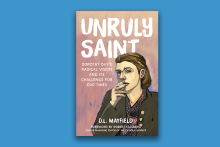
Day is who Mayfield looks to when her soul is parched and she longs to be renewed with God’s love “in order to keep going.” I found Unruly Saint spiritually nourishing in this way: It wrestles with the questions of how we keep going, how we keep having hope in our exhausting world, how we keep our inner light burning. “She wanted to keep a flame lit for people wondering how to break the cycles of war and oppression built into our histories and hearts,” Mayfield writes.

Children of the Underground
After seeing the courts return many children to allegedly abusive fathers, Faye Yager created an underground network that hid hundreds of mothers and children. The five-part docuseries Children of the Underground shows the moral complexity of Yager’s vigilante justice. Hulu/FX

Activist Vanessa Nakate on Jesus, erasure, and the climate crisis in the Horn of Africa.
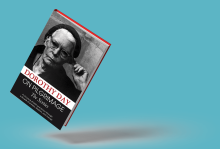
LOVE IS LACED liberally through this compendium, skillfully edited by Robert Ellsberg, of Dorothy Day’s monthly columns from The Catholic Worker, the newspaper of the movement Day co-founded. Love for God, especially as it lives in the poor whose burdens of poverty she tried to share, shines through Day’s accounts of her travels and her life at the Catholic Worker houses of hospitality in New York and the community’s farms. Seeing examples of living love seems even more important today as our country faces the same problems as in the ’60s: racism, poverty in a land of plenty, and endless wars that consume needed resources.
Day writes of these issues, but love as lived through acts of mercy is what unites the essays. She describes Catholic Worker houses of hospitality across the country where, daily, the hungry are fed, the naked are clothed, the dead are mourned and buried, and the sick and the imprisoned are visited. In these essays, these acts are presented in opposition to works of war and racism. She documents that the latter are fueled by an out-of-control U.S. military whose expenditures rob the poor.
Coming in for special notice are prisoners of conscience, Day’s colleagues who are imprisoned for resisting the draft that fueled the Vietnam War, including, in 1968, burning draft files in Catonsville, Md., and Milwaukee, in nonviolent destruction of what Jesuit priest Dan Berrigan called “improper property.” These nonviolent trespasses against the law by the anti-war and civil rights movements were in obedience to God’s laws. After several good recent biographies of Day, reading again the words that first introduced me to the Catholic Worker movement brought back memories of those days when Day helped so many commit to nonviolence as a way to make a world where, as her mentor Peter Maurin would say, “it’s easier for people to be good.”
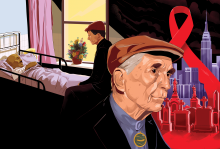
The well-known peace activist spent much of his life bringing comfort to the dying.

What the reports have in common is long lists of sexual abuse victims and their broken families. The testimonies of survivors are instructive for the quality of their demand for justice and yet, to paraphrase Tolstoy, each unhappy survivor story “is unhappy in its own way.” Each story is unbearable in its details of the physical and psycho-spiritual torture and the chronic wounds that remain. But in other respects, the two reports could not be more different.
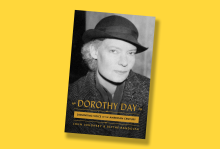
JOHN LOUGHERY AND Blythe Randolph have written a compelling and complete biography of a complex woman who may be the next American saint—and written it with a vibrant, personal voice. They place Catholic Worker co-founder Dorothy Day’s life in historical context, something the small circle of the Catholic Left I inhabit sometimes doesn’t see, which makes this book different than others about her. It inserts her life squarely into the times in which she lived and shows how her fidelity to the gospel as a journalist, activist, and Christian anarchist put her at odds with both church and state. It also shows how she persisted, becoming more and more herself as she aged.
Loughery and Randolph describe Day’s childhood in Brooklyn, N.Y., Oakland, Calif., and finally Chicago; her recognition of an affinity with socialism and pacifism while at the University of Illinois; the men and women she worked and drank with during her young days in Greenwich Village; and her first arrest—as a suffragist.
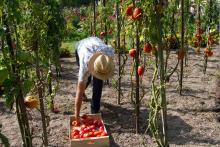
This younger crop of Catholic Workers is unquestionably interested in activism, but the issues they address are different from those of their predecessors.
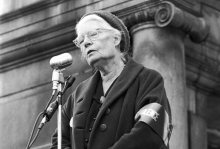
WHEN POPE FRANCIS addressed Congress during his 2015 visit to the U.S., he named four great men and women whose legacies helped shape the fundamental values of the American people: Abraham Lincoln, Martin Luther King Jr., Thomas Merton, and Dorothy Day, the Catholic social activist and pacifist. It was among his most audacious statements during the trip, and he got away with it because—outside of churches and the peace movement—Dorothy Day, the woman who could become America’s next saint, is largely unknown.
Revolution of the Heart: The Dorothy Day Story, a new documentary film by Martin Doblmeier, wants to put that right. More than a biography, this tapestry of archival footage and new interviews—which include Day’s granddaughters, plus devotees such as Martin Sheen and Sister Joan Chittister—is narrative theology, an argument for why an anarchist grandma could be a patron saint for those countering Trump’s America. “Dorothy Day spoke out publicly and forcefully in support of fair pay for workers, against the great imbalance of wealth, excessive expenditures for weapons, nuclear proliferation, and unjust wars overseas. We struggle with these same issues today,” Doblmeier tells me. He believes her life story is a roadmap, a spiritual guide for troubled times.
The film opens not with Day’s birth in 19th century Brooklyn, nor the years before her conversion, which she spent darting from bohemian parties to inner-city Masses, but in the 1950s, when the Catholic Worker movement she co-founded as a network of “houses of hospitality” took to the streets to protest the arms race. We see Day’s Catholic personalism—her belief that Christians must take personal moral responsibility for injustice—in action, and it is bracing and alienating. We meet her isolated from the Catholic Church: a voice crying in the wilderness. Doblmeier’s nods toward contemporary politics make this a challenging introduction. “I think Dorothy Day presents a direct path that we all can take,” he explains. “She believed if you see someone in need, you fix it yourself. You don’t wait for the government or a social service agency to intervene.”
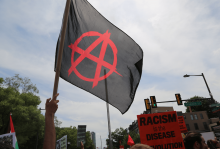
BEN WILDFLOWER IS a self-described “high-church lowlife.” He lives in Kensington, a Philadelphia neighborhood that’s also home to intravenous drug users and sex workers. Wildflower—the surname he and his wife adopted after their marriage—is white, bearded, and male; he grew up among conservative evangelicals but now attends an Episcopal church (“a wonderful, welcoming space for so many people alienated by the church,” he said, “but also a bizarre, bourgeois institution”). Sometimes he fixes his roommates’ bikes to cover rent; he aims to live on very little.
I came across Wildflower through his handmade religious prints that resemble the black-and-white woodcuts found in The Catholic Worker , albeit with a little more attitude: “O Mary conceived without white supremacy,” reads one of Wildflower’s prints featuring the Holy Mother using aerosol flamethrowers to destroy Confederate and Nazi symbols, “pray for us trying to dismantle this shit.”
Wildflower doesn’t love the word “anarchist” because it sounds too self-assured (“like how a super-duper Reformed person has answers for everything”) and often evokes scenes of white dudes eager to break stuff and punch cops. But he sticks with it: “I’m an anarchist because I oppose hierarchical power structures,” said Wildflower. “You apply it to sex and gender, you have ‘feminism.’ You apply it to white supremacy and racism, and you have ‘anti-racism.’ So what is it when you apply it to the modern state? I guess we don’t have a word better than ‘anarchism.’”
Does it bring joy?
IN THE PAST four years, it’s been tempting to believe the main problem with U.S. democracy is the current occupant of the White House and the electoral politics that paved his way to office. But Christian anarchists offer a different perspective.
“The thought of America crumbling should bring you joy,” Wildflower told me in an interview last spring. As Christian anarchists see it, the problems that exist in our nation—poverty, white supremacy, militarism, economic inequality, and on down the list—are not aberrations in an otherwise good system, but rather inescapable outcomes of any system where some people have been put in power over others. And as people of God, Christian anarchists feel called to dismantle these oppressive systems and create radical alternatives.
Take prisons: “I think people are valuable and shouldn’t be warehoused in cages,” said Wildflower. “I don’t think [prison] changes people; I don’t think it makes us safer; I think it’s a tool to control and impoverish communities of color. I want it to be destroyed.” Though he participates in what he calls “reformist” actions, such as voting for a better district attorney or advocating to change sentencing laws—something his younger anarchist self would have scoffed at, but that he felt was important after listening to women and people of color in his community—he doesn’t feel those actions will ever fix the underlying problem. “A system that holds people accountable for injustices looks so unimaginably different than the prison system, that I’m still totally on the ‘burn it down’ side.”
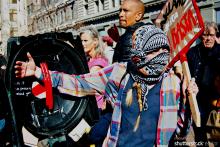
FROM THE STREETS of Ferguson to Charlottesville and from Occupy to Standing Rock, anarchists represent a prominent part of today’s activist mix. How might Christians understand this tradition of political engagement?
In popular culture, anarchism is often trivialized as a cipher for generalized chaos, based on a caricature of hooded black bloc brawlers smashing store windows at protests. On the other hand, some anarchists settle for mere sloganeering, with little analysis or strategy. But simplistic stereotypes fail to recognize that, as social critic Cornel West put it, anarchism represents “a powerful critique of concentration of power in the nation-state.”
The label derives from the Greek anarchos, meaning “without rulers” (not, as some libertarians wrongly assume, without rules). Anarchists work for voluntary, nonhierarchical forms of self-organization and against state coercion and oppression.
As a social movement and ideological orientation, political anarchism began coalescing in the wake of the failed social revolutions of 1848 around Europe. Early anarchists critiqued the state as the root of all human oppression, and as the “left of the left” challenged Marxist assumptions that revolutions could only be accomplished by changing state structures from the top down. Some proposed communal self-rule and “mutual aid” as an alternative to social Darwinism.
The majority of the tradition was (and remains) decidedly atheist—“no gods, no masters.” But Pierre-Joseph Proudhon allowed that early Christianity was essentially anarchist until the church sold out to Constantine, while Peter Kropotkin argued the same about popular radical religious movements of the late Middle Ages.
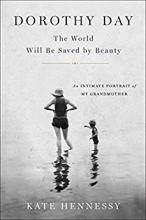
IN DOROTHY DAY: The World Will Be Saved by Beauty, author Kate Hennessy, Dorothy Day’s youngest granddaughter, gives a deeply intimate and highly credible account of her grandmother, a writer, social activist, and co-founder of the Catholic Worker movement with Peter Maurin in the 1930s. Hennessy explores themes of integrity, vocation, and community, portraying Dorothy Day honestly in her gifts and faults. But the most powerful thread is raw beauty that links together the author to her grandmother, strangers to one another, and people to God.
Day’s life was often complicated and marked by loss. Nonetheless her worldview was postured toward the words of poet Max Bodenheim: “I know not ugliness. It is a mood which has forsaken me.” Queen Anne’s Lace growing in the city, spinning wool with her grandchildren, her love for the father of her only child, standing in a breadline with seamen, or walking along the shore are all examples of the beauty that both guided and followed Dorothy Day.
Day, who was born in 1897, wasn’t yet a Catholic when she moved to New York City from Illinois in 1916 in pursuit of a writing career. She mingled with writers, artists, and radicals and was active in the social movements of the time. Hennessy notes that Day “was not always the clear-eyed visionary that we now see her as.” Day considered her life “disorderly” and moved from job to job, from one lover to another; she tried to commit suicide on two different occasions.
But even before Day knew God, she knew that God was leading her. She said, “I cannot help my religious sense, which tortures me unless I do as I believe right.”
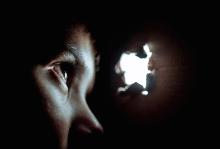
IT IS HARD to tell time from inside a tomb. We cannot know how many minutes or hours Jesus’ resurrection took. Traditionally, he was in the tomb for three days. But how long does it really take for someone to rise—or be raised—from the dead?
Some resurrections start at a mundane moment. Dorothy Day, for example, was sitting at the kitchen table in a crowded apartment in New York’s East Village (writing a never-to-be published novel) when the French Catholic theologian Peter Maurin knocked on the door. “It was a long time before I really knew what Peter was talking about that first day,” wrote Day, who went on to found the Catholic Worker movement with Maurin. “But he did make three points I thought I understood: founding a newspaper for clarification of thought, starting houses of hospitality, and organizing farming communes. I did not really think then of the latter two as having anything to do with me, but I did know about newspapers.”
Some resurrections come through brutal suffering. Twenty-four-year-old Recy Taylor was left for dead in 1944 on a dark road near Abbeville, Ala., by the six white men who kidnapped and raped her as she walked home from a prayer meeting at Rock Hill Holiness Church. “A few days later, a telephone rang at the NAACP branch office in Montgomery,” wrote historian Danielle L. McGuire in At the Dark End of the Street. The president of the local branch promised to send his “best investigator” to speak with Recy Taylor. The investigator’s name was Rosa Parks. As part of Park’s organizing work on Taylor’s case, she formed what would become the Montgomery Improvement Association, the leaders responsible for instigating the bus boycott a decade later, an opening salvo of the civil rights movement.
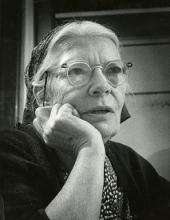
"We must talk about poverty, because people insulated by their own comfort lose sight of it."

On Jan. 21, I’ll join thousands in D.C. for the Women’s March on Washington. My first stop will be at a local congregation, one of several hosting a prayer service and warming station for marchers. I’m an anti-racist, feminist, Christian, and for me, faith will be part of the day.
I’ve been disappointed with Christian silence, and even active resistance, to social justice imperatives, but my commitments to justice stem from my faith, and that’s why I march.
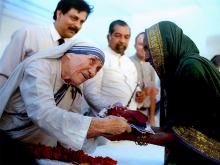
The Rev. James Martin is a Jesuit priest and popular author who wrote about his lifelong fascination with the saints and the many aspects of sainthood in the Catholic tradition in the best-selling book My Life With the Saints.
Loyola Press is issuing a 10th anniversary edition of Martin’s memoir in September, which also coincides with the Sept. 4 canonization of Mother Teresa of Calcutta, who even during her lifetime – she died in 1997 – was regarded by millions as a “living saint” for her work with the destitute in India and around the world.
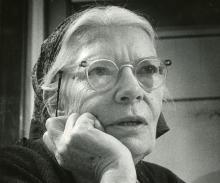
The famous Catholic Worker activist Dorothy Day once remarked, “Don’t call me a saint. I don’t want to be dismissed that easily.” That hasn’t stopped the Archdiocese of New York, however, from moving forward with a “canonical inquiry,” the next step required to become eligible for beatification and then canonization, when a figure officially becomes a saint.

I wonder if Pope Francis knows that he’s being used to justify bombing Syria.
After an all-day debate on Dec. 2, the House of Commons authorized the British government to begin bombing ISIS in Syria. Hours later, RAF Tornadoes attacked an oil field in eastern Syria.
During the debate, Caroline Spelman, the member of parliament who represents the Church of England in the Commons, noted that, “The Archbishop of Canterbury made it clear that, in his view, force might be necessary to keep the refugees safe.”
Then, citing Pope Francis, she said, “‘Where aggression is unjust, aggression is licit against the aggressor.’ These are views which I share, which is why I will support the motion.”
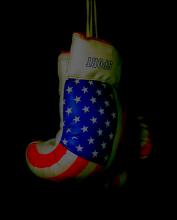
God’s role in our political system was prominently mentioned during the recent Republican debate, even more than the economy. Some presidential wannabes, sounding more like candidates for preacher-in-chief instead of commander-in-chief, believe God supports the Grand Old Party and their campaigns for the White House.
The debate forced me to seek the views of four famous religious leaders who grappled with the relationship between religion and society: Dorothy Day (1897-1980), a Catholic social activist and a candidate for sainthood; Moses Maimonides (1135-1204), a philosopher, rabbi and physician; Reinhold Niebuhr (1892-1971), a Protestant theologian and champion of “Christian Realism;” and Stephen Wise (1874-1949), a prominent, politically active rabbi.